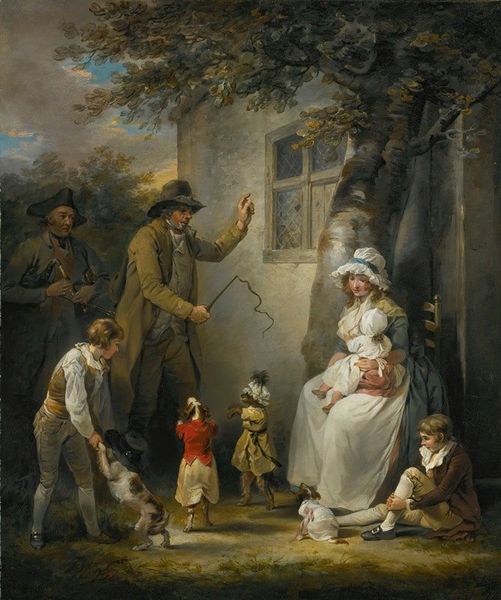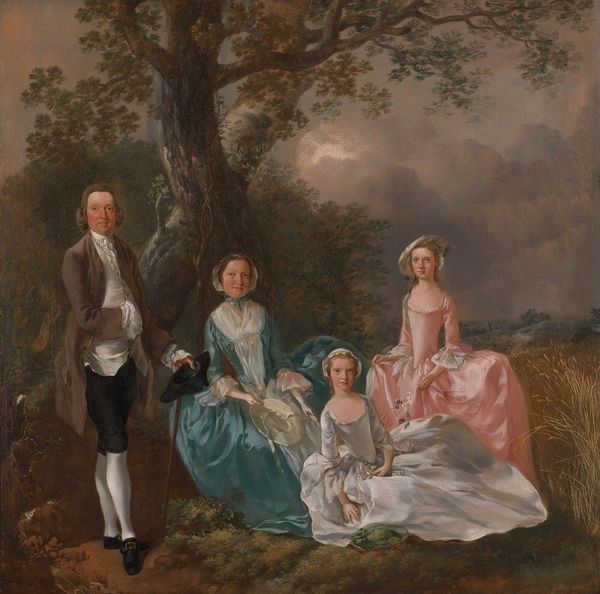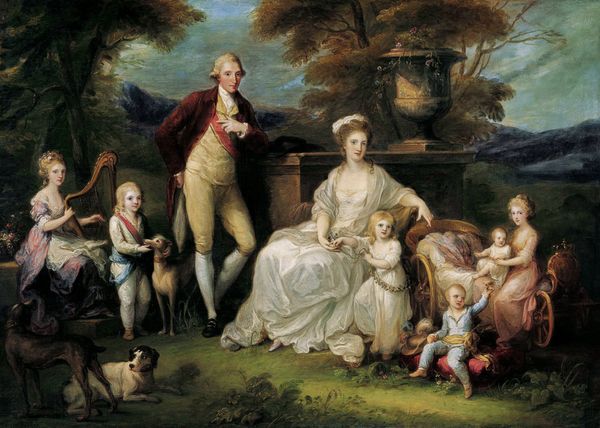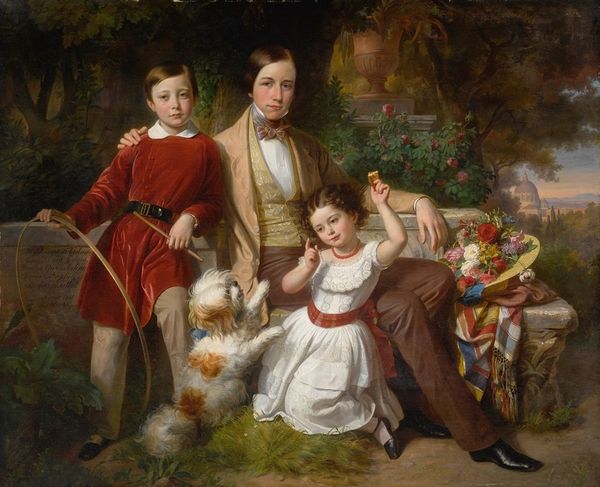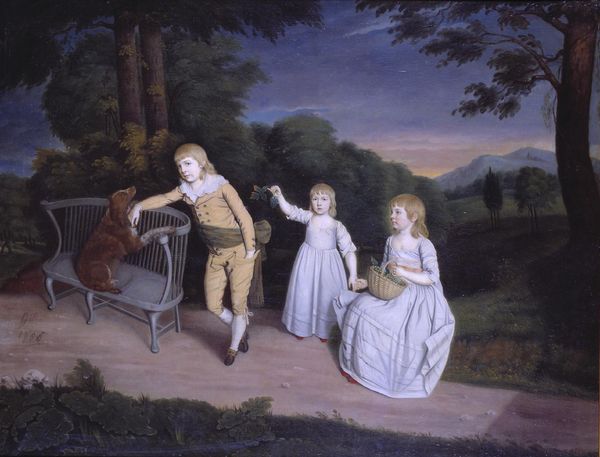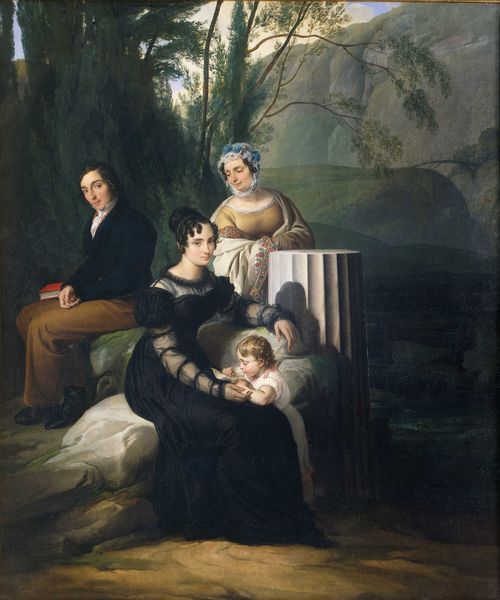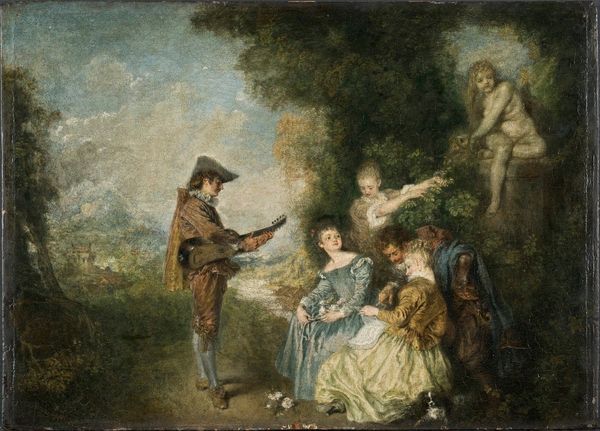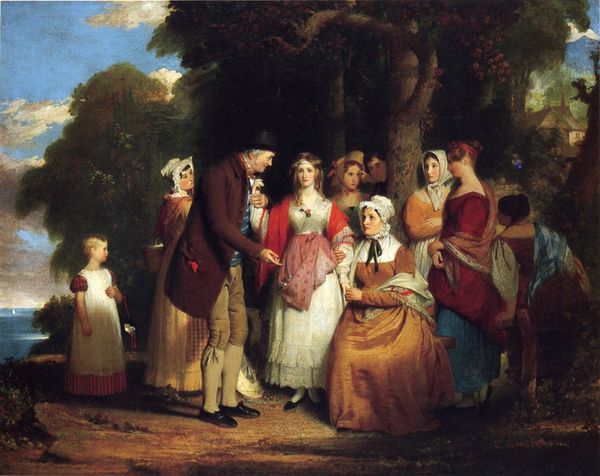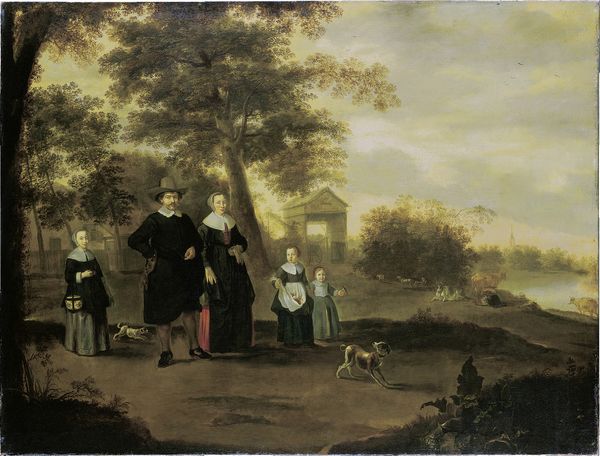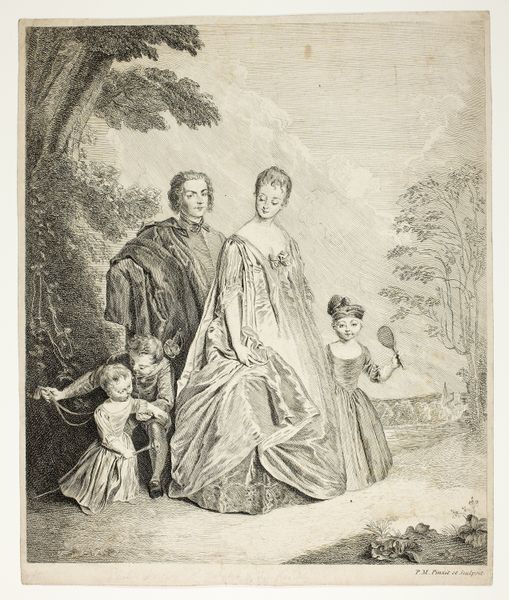
Jonkheer Gysbert Carel Rutger Reinier van Brienen van Ramerus(1771-1821), with his Wife and four of their Children 1804
0:00
0:00
adriaandelelie
Rijksmuseum
painting, oil-paint
#
portrait
#
neoclacissism
#
painting
#
oil-paint
#
landscape
#
oil painting
#
group-portraits
#
romanticism
#
genre-painting
#
history-painting
#
academic-art
Dimensions: height 84.5 cm, width 71 cm
Copyright: Rijks Museum: Open Domain
Editor: Here we have Adriaan de Lelie’s "Jonkheer Gysbert Carel Rutger Reinier van Brienen van Ramerus (1771-1821), with his Wife and four of their Children," painted in 1804. The painting is oil on canvas. What immediately strikes me is the balanced composition and the rather formal depiction of this family amidst an idyllic landscape. What stands out to you, from a formalist perspective? Curator: What arrests my eye is the painting's clear structuring. Notice how de Lelie employs a pyramidal arrangement, with the family grouped towards the center and the surrounding landscape acting as a frame. It establishes a hierarchy, subtly emphasizing the father. The tonal modulations from foreground to background invite our eyes into the vista. The controlled brushwork smooths textures and heightens the overall effect of classical restraint and order. It invites closer inspection: what meaning emerges from that visual language? Editor: So, you're saying that the artist uses shape and brushwork to create a sense of order and status? What about the somewhat muted color palette? Does that play a role in conveying the family's stature, or something else? Curator: Precisely! The limited color range contributes further to that air of considered control. The subdued greens and browns of the natural backdrop contrasted by bright whites soften contrasts which invite you in but prevent the eye from racing randomly. Note how he employs those visual contrasts to underscore the visual organization of the painting as a cohesive whole. Each choice strengthens the statement on a social order echoed on the formal arrangement of elements. Do you notice a potential challenge to this serene formalism in the gaze of the subjects? Editor: I do. I now appreciate how de Lelie uses form to both convey status but introduce individual emotionality and humanity in this scene. Thanks for sharing these details. Curator: It's through this deep formal analysis that we can arrive at such new insights.
Comments
No comments
Be the first to comment and join the conversation on the ultimate creative platform.
